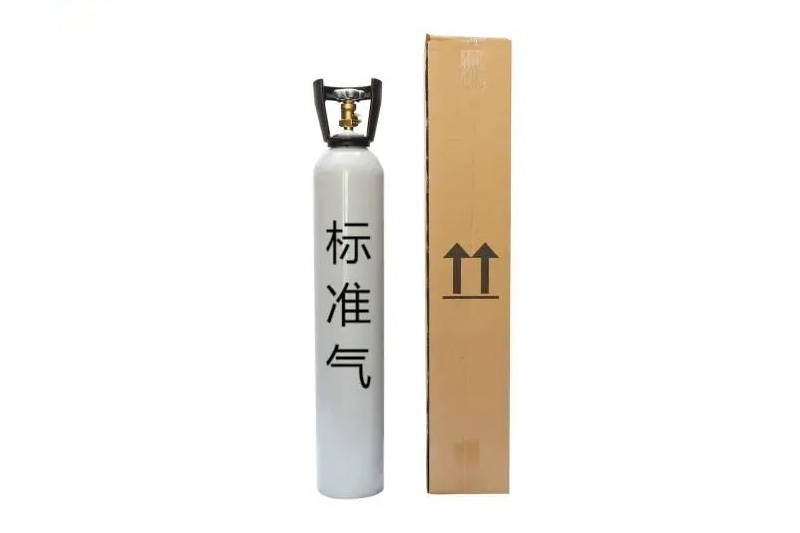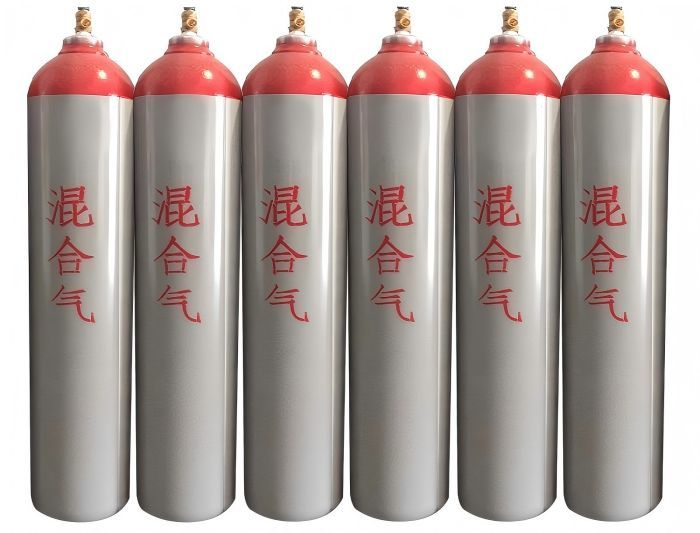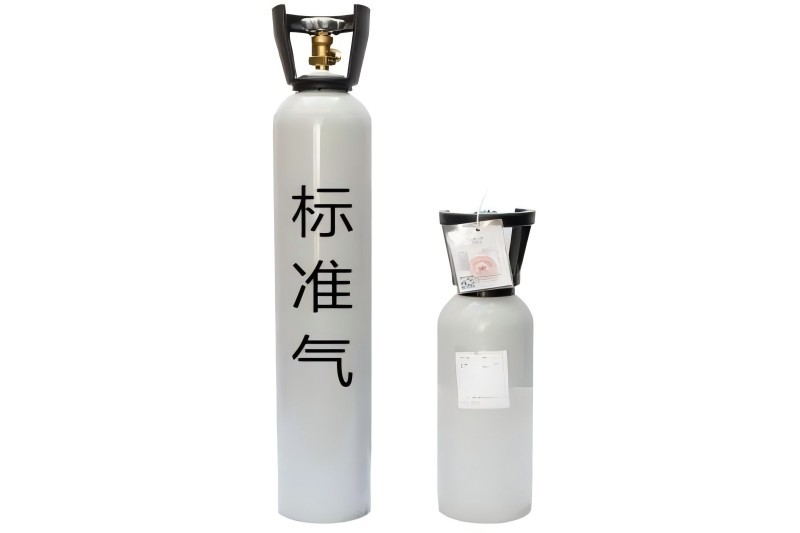Petrochemical standard gas refers to precisely formulated and certified reference gases used in petrochemical production, testing, and instrument calibration to ensure process safety and data accuracy. These gases contain critical components such as methane, propane, hydrogen sulfide, and carbon monoxide, simulating real-world gas environments under operational conditions. They are applied in refining catalytic cracking, pipeline leak detection, tail gas emission monitoring, and other critical processes. The gas purity must reach the parts per million (ppm) level and comply with international certifications such as ISO 6142 to guarantee concentration traceability. Additionally, these gases must exhibit long-term stability to prevent compositional changes during transportation and storage, while also adapting to calibration requirements under extreme conditions like high temperatures and high pressures. With the intelligent transformation of the petrochemical industry, standard gases are evolving toward multi-component dynamic simulation, rapid-response online analysis, and low-carbon monitoring technologies, providing core support for safe production and environmental compliance.
Leak Detection Calibration Gas
Leak Detection Calibration Gas is a reference material used to calibrate gas detection alarms and leak detection instruments. It ensures the sensitivity and reliability of equipment through precisely controlled compositions and stable concentrations. Typically composed of high-purity background gases (e.g., nitrogen or air) mixed with target gases (e.g., methane, carbon monoxide, hydrogen sulfide) at specific concentrations, these gas mixtures cover a range from alarm thresholds to full-scale ranges to meet diverse operational needs. Compliant with national standards such as GB/T 5274, the gas guarantees homogeneity and long-term stability. It is widely applied in petrochemical plants, gas pipelines, and fire safety inspections, where periodic calibration helps prevent accidents caused by gas leaks, ensuring personnel and equipment safety. Custom formulations with varying gas combinations and concentration gradients are available to address specialized requirements.
Halogen Gas Mixture refers to blended systems composed of halogen elements (fluorine [F₂], chlorine [Cl₂], bromine [Br₂], iodine [I₂]) and their compounds. These mixtures exhibit high chemical reactivity, strong oxidizability, and corrosiveness, with synergistic effects under specific conditions. For instance:Fluorine blended with noble gases enhances plasma etching processes in semiconductor microfabrication.Chlorine combined with ozone boosts disinfection efficacy in water treatment systems.Bromine-tungsten lamps utilize the bromine cycle to extend filament lifespan in lighting applications.However, their toxicity, flammability, and explosiveness demand strict handling protocols. Storage and transportation require corrosion-resistant containers and protection from light exposure. Modern industries leverage customized halogen gas mixtures for specialized roles in material synthesis and environmental remediation, driving innovation while prioritizing safety and process efficiency.
Laser Gas Mixture refers to functional gas blends composed of multiple high-purity gases mixed in precise ratios, primarily used for energy excitation and optical conversion in gas lasers. Key components include carbon dioxide (CO₂), nitrogen (N₂), helium (He), and noble gases (e.g., neon, argon). These mixtures optimize particle transition efficiency through accurate proportioning, ensuring stable laser output power and beam quality. Widely applied in industrial cutting, medical surgeries, scientific research, and fiber-optic communications, examples include CO₂ lasers for precision metal processing and excimer lasers for ophthalmic refractive corrections. The gas purity must meet parts-per-million (ppm) purity levels, as impurities can degrade laser performance or damage optical components. Current advancements focus on longevity-optimized gas formulations, regenerative purification systems, and low-toxicity eco-friendly alternatives, addressing the dual demands of high-power laser equipment and green manufacturing initiatives.
Electron Gas Mixture is a functional gas blend composed of multiple high-purity gases precisely mixed in specific ratios. It is widely used in high-end manufacturing sectors such as semiconductors, display panels, and photovoltaics. Typical components include argon, nitrogen, hydrogen, and fluorocarbon compounds, among others. By precisely controlling the concentration of each component, it meets diverse process requirements: enabling nanoscale precision in plasma etching, regulating thin-film growth characteristics during chemical vapor deposition (CVD), and optimizing doping efficiency in ion implantation. These gas mixtures must adhere to parts-per-billion (ppb) ultra-high purity standards to prevent trace impurities from compromising chip performance, while ensuring exceptional stability and process repeatability. As microelectronics technology advances toward sub-3nm process nodes, electron gas mixtures are evolving toward ultra-low particulate levels, intelligent real-time blending, and environmentally friendly formulations, solidifying their role as a critical foundational material underpinning advanced manufacturing industries.
Electric Light Source Gas Mixture
Electric Light Source Gas Mixture is a functional medium composed of inert gases, halogen gases, and metal vapors blended in precise ratios, serving as the core of high-efficiency lighting systems. Typical formulations include inert gases like argon and krypton as base carriers, mercury vapor to enhance ultraviolet radiation, and metal halides to optimize spectral distribution and color rendering performance. Through scientific blending, these mixtures generate synergistic effects during electrical discharge:Argon-mercury systems achieve 5 times more energy-efficient performance compared to traditional incandescent bulbs.Metal halide regeneration mechanisms extend light source lifespan to over 20,000 hours.Modern advancements prioritize environmental sustainability by reducing mercury content and developing lead-free formulations, driving the evolution of green lighting initiatives. These customizable gas solutions are widely used in LED replacement lighting, automotive HID headlamps, and professional studio lighting, continuously advancing illumination technology through precision chemistry and energy-efficient design.
Environmental Monitoring Standard Gas
Environmental Monitoring Standard Gas is a precisely formulated reference gas used to calibrate air quality analyzers, pollution source monitoring systems, and other environmental detection equipment, ensuring data accuracy and comparability. Key components include sulfur dioxide (SO₂), nitrogen oxides (NOx), volatile organic compounds (VOCs), and particulate matter simulators, with concentration ranges spanning regulatory thresholds to trace-level pollutants. These gases meet ppm to ppb ultra-high purity standards and are certified under ISO 17025 to guarantee metrological traceability.Widely applied in air pollution warning systems, industrial emission verification, and laboratory quality control, they play a critical role in emerging fields like carbon monitoring and ozone precursor analysis. As environmental regulations tighten, these gas standards are evolving toward multi-component blends, low-concentration stability, and intelligent dynamic calibration technologies, enabling precise pollution control and supporting global carbon neutrality goals.
Medical calibration gas refers to reference gases used for calibrating and quality-controlling medical devices and testing instruments. Its composition and concentration strictly adhere to international standards (such as ISO 13485, GMP, etc.), ensuring precision and safety in medical diagnosis and treatment. These gases typically consist of high-purity oxygen, carbon dioxide, nitrogen, nitrous oxide, or specific gas mixtures (e.g., O₂/CO₂/N₂ blends for blood gas analysis), with some containing trace calibration components. They are applied to verify the performance of critical medical equipment, including ventilators, anesthesia machines, blood gas analyzers, and pulmonary function testers. The products must exhibit high stability and contaminant-free properties, with gas cylinders and valves specially treated to prevent adsorption or chemical reactions. Widely used in hospitals, testing laboratories, medical device manufacturing, and research institutions, medical calibration gases ensure accurate equipment data through regular calibration, supporting clinical diagnosis and therapeutic decision-making. Customized concentrations and mixing ratios are available to meet diverse medical scenarios, enhancing compliance with healthcare standards and operational reliability.





